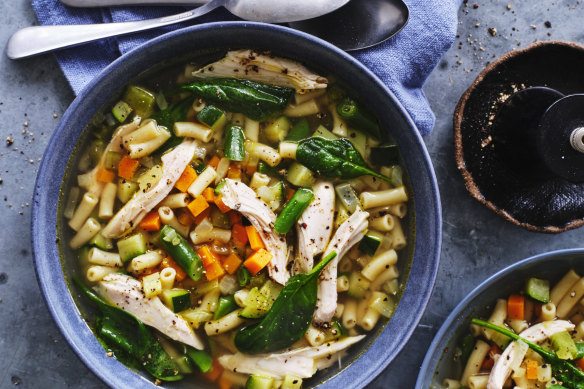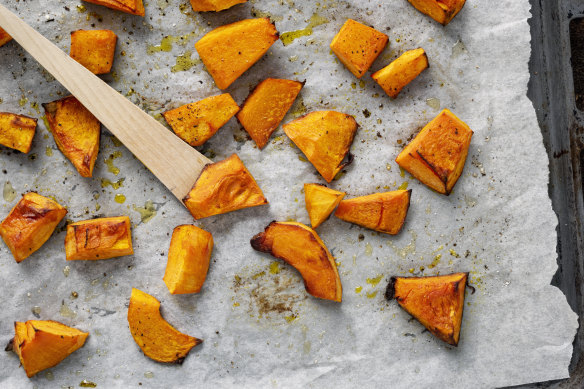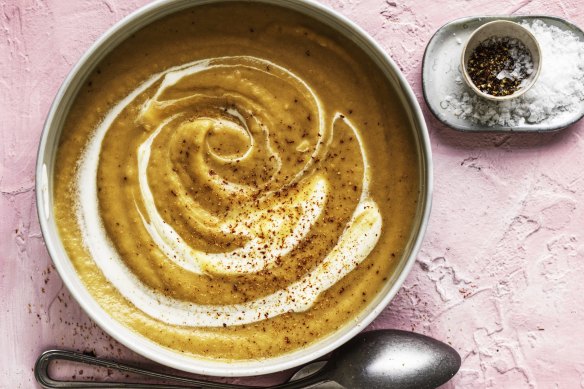Six steps that take a soup from good to great (and why you should follow the OMFG rule)
Tick off these simple but important elements, and reap the rewards later with warming bowls full of soul.
Winter solstice is fast approaching and with it, peak soup weather. But how do you make your soups hearty and rib-sticking rather than simply … wet?
The answer lies in mastering these six foolproof elements.
Invest in stocks
According to food writer Michael Ruhlman, “It’s not just that everything tastes better when you use fresh stock ... it’s hard to make anything that’s not delicious when you have good stock on hand.”
If you think about other meanings of the word “stock” – from a support beam through to “stocking” up for the winter, let alone the “stock” market, it’s no surprise that a good-quality stock offers the strongest foundation for success.

Even when a soup recipe calls for water, I’ll sub in stock because, as a seasoned cook (and a seasoning fiend!), I’ve learnt that using stock is like doubling down.
The simmering and flavour extraction were already done when the stock was made so the soup will need far less input – of time, effort, and ingredients. And, if you’re making your own stock, you’re using up kitchen scraps that might otherwise go to waste.
If you’re low on space but keen to “stock up”, concentrate homemade stock by reducing it, cooling, then decanting it into ice cube trays, or buying stock cubes for the pantry.
When using store-bought stock, remember to taste for seasoning before adding more salt because some brands are saltier than others.
OMFG: Onion Makes it Far Glossier
As with almost any savoury dish, onion is step #1. In fact, even if I’m adding leek as well (welcome and encouraged), I’ll still add a brown onion because of the sweetness, umami and silky viscosity it brings to the finished product.
The most important thing to remember is that onion always needs to sweat for longer than you think: 8–10 minutes is my general rule. But who has the time to stand around waiting and stirring? Not me, and not you.
Instead, once your diced onion is in the pot with some oil and/or butter, chuck the lid on and set an alarm for 8 minutes, then get on with the rest of your prep. If you’re a smart-device household, try asking Siri/Alexa/whomever else is on call to set the alarm for you.

Hot ‘n’ heavy
Some vegetables are happy to be added to soups in their raw form. Anything that benefits from shorter cooking (like leafy greens), or that could be added to a salad without being cooked (think peas, tomatoes, zucchini and the like) will happily simmer away until just softened and then be good as gold.
But other veg, such as root veg (other than spuds!), pumpkin, and even capsicum, benefit from having their flavour intensified first with a good roasting until softened. There’s no need to peel these veg before roasting because you can always scoop the flesh off the skins or blitz the skins in, too, if you don’t mind a slightly darker colour.
Good to grate
If you’re low on time, chopping the vegetables into smaller chunks will speed up your cook and help you access flavour faster. Elementary, you may say.
But have you ever tried grating veg in the food processor before cooking? I like to do this for woodier veg such as beetroot and carrots. The soup is ready to serve once the vegetables are soft enough to squeeze between your fingertips. Leave it chunky or cool, then blitz to a “cream of” soup.

Texture is tops
Keeping your soup chunky is one way to play with mouthfeel, but if you’ve gone the whizzy route, think about adding dimension in the form of texture.
Whether that’s a slice of buttered toast with pumpkin soup, a cheese toastie for dipping into tomato soup, or a fresh garlic-rubbed crostini with your white bean soup, adding a textural element will make every mouthful infinitely more interesting.
A little herbage never hurts either – especially if you already have soft herbs such as parsley, oregano or dill on hand. Chop and add them once the soup’s off the heat for extra colour, flavour and texture.

The cream rises
If you plan to serve your soup as the main event, remember that fat is flavour and satiety. You’ll feel fuller faster if you add some richness to the bowl.
Whether that comes in the form of a rasping of parmesan over your minestrone, a dollop of sour cream into your borscht, or creme fraiche in your parsnip veloute, fat can be the difference between so-so soup and satisfaction.
Even something as simple as a lick of extra virgin olive oil just before serving can take something from ho-hum hot ham water to heaven in a bowl.
Send your Ask Alice questions and conundrums to alice@aliceinframes.com
The best recipes from Australia's leading chefs straight to your inbox.
Sign up